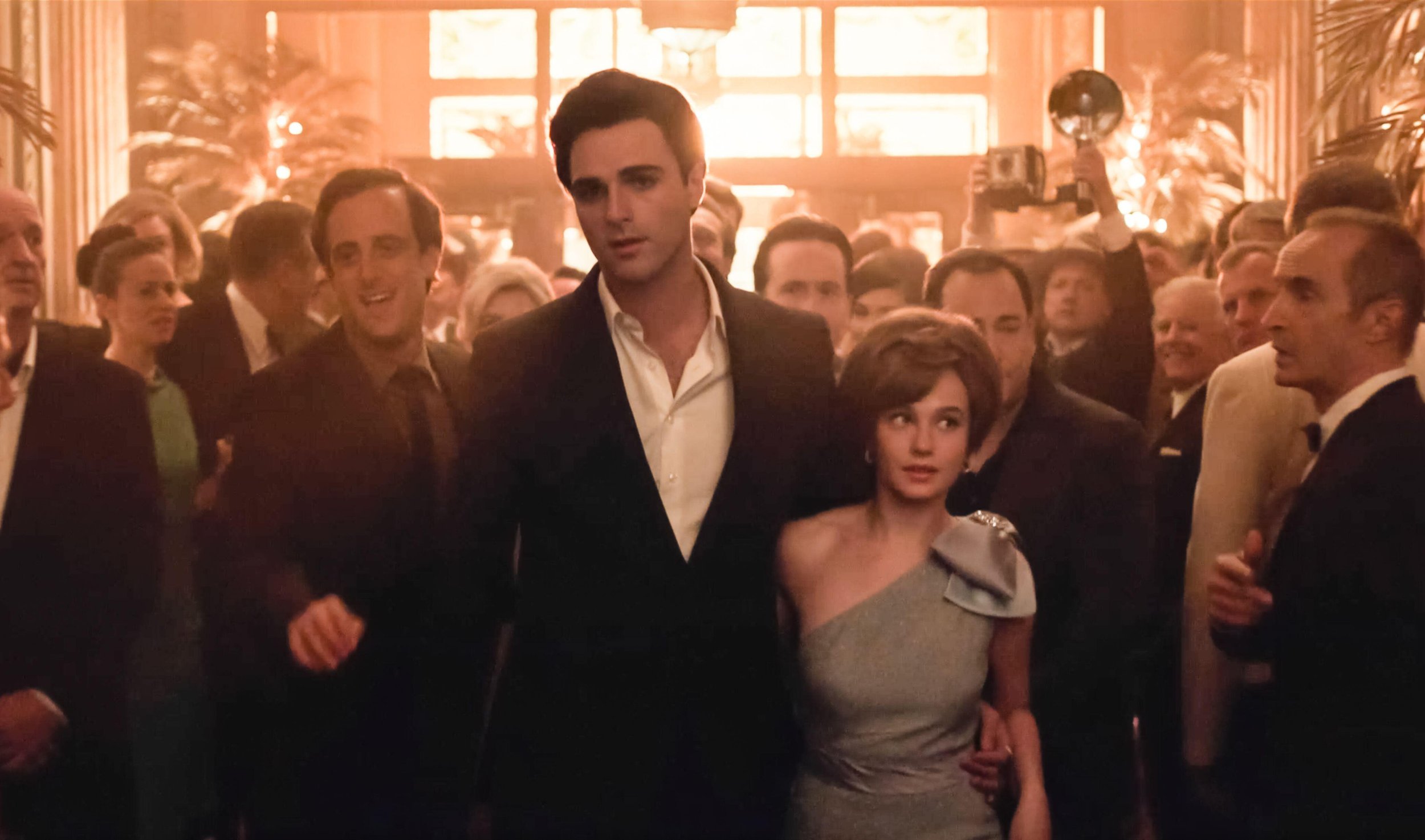NYAD
Directing: B+
Acting: B+
Writing: B
Cinematography: B+
Editing: B
I’ve held a longstanding opinion that movies should be judged on their own merits, and not by comparison to source material. But Nyad, which was written by Julia Cox and based on Diana Nyad’s 2015 memoir Find a Way, complicates this notion due to Diana Nyad’s well-documented penchant for embellishment. Taking creative license is one thing, and being outright misleading is quite another—and Nyad the film depicts notable events that never happened. Most crucially, the claim that Diana Nyad was the first person to swim “unassisted” from Cuba to Florida is so dubious, that Guinness World Records rescinded their recognition of the crossing as an unprecedented achievement.
I must admit, I watched multiple scenes in Nyad wondering how accurate it was. To be fair, no one is labeling Nyad strictly as “a true story”—neither co-directors Jimmy Chin or Elizabeth Chai Vasarhelyi—but, come on: we are meant to understand, and take it in, as such. There are some sequences in the film that are obvious inventions for dramatic effect, such as a near-miss shark attack (Nyad did really bring a crew who used shark repelling electronic pulses) or two different hallucination sequences. When Nyad hallucinates, it’s pretty to look at, although for me it brought to mind how the entire film Life of Pi employs scenes of that sort far more successfully.
Does all this mean I didn’t like Nyad? Far from it—this is a film that succeeds remarkably well at what it sets out to do, which is to entertain, inspire, pull at the heartstrings. I only mention all of the above because what it does do is mitigate how impressed you can really be with the film, and with Diana Nyad herself. This is a really compelling film, which also could have been better.
Nyad does go out of its way to illustrate its title character’s ego, and even her penchant for embellishment, and eagerness to talk about herself. Annette Bening is perfectly cast in the role, and although Jodie Foster is also great as Bonnie, Diane’s best friend and coach, it’s honestly surprising to see Foster getting so much more Oscar buzz than Bening, as Bening impresses more memorably here. I can only theorize that Bening’s four nominations with no wins is an ironically contributing factor, whereas Foster, in spite of also having four nominations and two wins under her belt, is catching more attention in a “comeback” role in her first lead part since the poorly reviewed Hotel Artemis in 2018, and only her second since Elysium in 2013. The woman has not exactly been prolific in the past ten years, and people pay attention when she turns up again.
The question of whether Foster is playing a lesbian for the first time in Nyad is also a complicated one. The film never directly addresses Bonnie’s sexuality, nor can I find anything online even referencing it—everything only covers their relationship as longtime best friends, and that Nyad herself is an out lesbian. This movie does acknowledge that, in one single, brief reference to a woman she once dated, but it still establishes the fact, makes it clear, and then renders it completely incidental. The natural assumption is that Bonnie is also a lesbian, especially given the degree to which Foster leans into a clearly “lesbian vibe” in her performance. If nothing else, it’s quite nice to see a story about close friends who are lesbians (?) but not in any way romantic with each other.
Indeed, romance never factors into the story of Nyad, a departure from traditional approaches to movies like this. Instead, this is about a single-minded woman stunningly obsessed with gaining the achievement that eluded her upon her first attempt at the age of 28, and then she finally—spoiler alert!—achieves it after her fifth attempt at the age of sixty-four. And if we want to give Diana Nyad the benefit of the doubt, her achievement is stunning regardless of the technicalities of “independent observers.” She has every right to be proud, although given the characterization of her ego, being stripped of official accomplishment—a fact this film never actually acknowledges—must be driving her bonkers.
In spite of the issues swirling around Nyad, I really enjoyed watching this film. Whether I truly rooted for the woman is kind of another story—she strikes me as kind of psychotic. She drives her friends crazy, and Diana’s self-absorbed obsession with accomplishment is not something I could tolerate the way Bonnie does. It may be apparently platonic, but how much these two women love and care for each other cuts through all the bullshit, and might just be the biggest reason this move is worth watching.
It may be a cinematic fish story but it works.
Overall: B+










